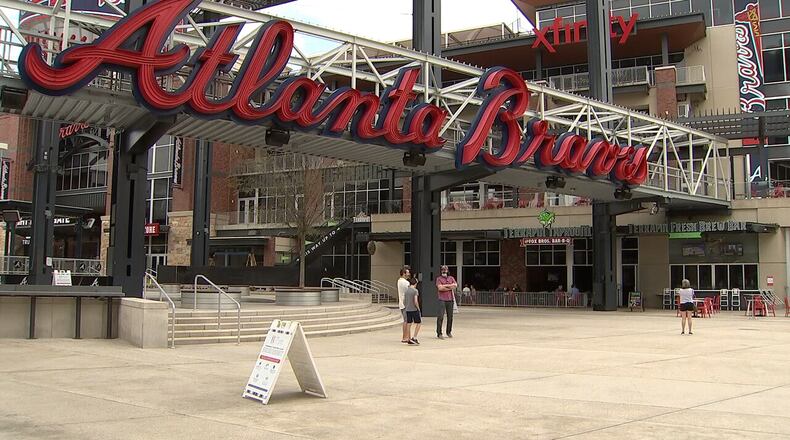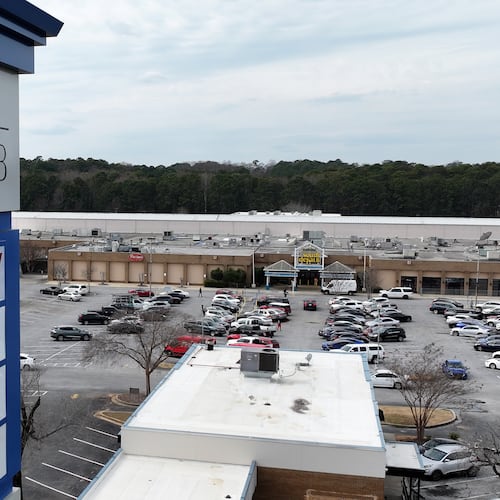Cobb County Finance Director Bill Volckmann’s memo was tucked inside a 213-page agenda packet as part of a request to county commissioners last week.
Volckmann sought an additional $2 million to cover expenses associated with the Major League Baseball’s 2021 All-Star game coming to Cobb County in July.
He said the event would generate between $37 million and $190 million in economic impact, a “robust” return on the county’s investment. He didn’t cite a source for the estimate, describe methods used to calculate it, or specify the amount that might flow back to taxpayers through the county’s coffers.
Within days, county officials, the Atlanta Braves and Major League Baseball had all distanced themselves from those projections.
The county said the estimates came from the Braves and MLB. The Braves said the league provided them.
“I can’t tell you the methodology that was used,” longtime Braves’ executive Mike Plant told county commissioners on Tuesday. “They have their methodology, but we’re pretty confident that there will be a huge global impact here on Cobb.”
A MLB spokesman later said the league played no role in computing the data. It had only compiled projections supplied by business interest groups from cities that have hosted the event over the past 20 years.
“The economic impact of Major League Baseball All-Star Games is determined by an entity in the host city like a travel and tourism board, a sports council, or another group within the city,” the MLB spokesman said in a statement to The Atlanta Journal-Constitution. “Major League Baseball does not determine the economic impact of its All-Star Games.”
Sports economists told the AJC that the failure to assume responsibility for the projection highlights the deep wedge between local boosters of professional sports franchises and academics devoted to a niche field: measuring public subsidies for sports facilities and events against the actual payoff to taxpayers.
Yet commissioners partially based their decision to approve the $2 million — for extra transportation and security at Truist Park during the July 13 event — on the wide-ranging forecast of the economic impact.
Victor A. Matheson, an economics professor at the College of the Holy Cross in Worcester, Mass., has written about the subject for past two decades.
Matheson said he has developed his own formula for calculating economic impact: take a sports promoter’s figure, move the decimal one place to the left, then divide by ten.
Matheson said city’s tourism councils and economic development agencies have little incentive to conduct postmortems that compare the original projection used to sell the public cost to taxpayers with the actual spending surrounding a major event.
“The results are often embarrassing to the city officials who were propping up the event,” he said.
When New York City Mayor Michael R. Bloomberg announced that the 2013 Midsummer Classic would be played at Citi Field, home to the Mets, the city’s Economic Development Corporation projected an impact of $191.5 million.
The Development Corporation did not return phone and email messages asking whether the accuracy of the estimate was ever verified.
But for years, the figure — the largest economic impact statistic on MLB’s list — has been touted in other cities as an example of the possible windfall.
In another instance, local officials revised their economic impact figure downward after the game, but the initial higher projection remained in MLB’s stats.
Minneapolis’ tourism agency, Meet Minneapolis, estimated the 2014 All-Star game would add $75 million to the local economy.
Months later, the Minneapolis Star Tribune quoted an official from the state’s revenue department who said that sales tax data was up by 9%, or $55 million, the month of the game compared to the year before.
After factoring in Minneapolis’ rebounding economy, officials identified an increase of roughly $21 million that could be attributable to the game.
The Star Tribune reported that Meet Minneapolis used $60 million in economic impact reportedly generated in both St. Louis and Kansas City, previous All-Star hosts, to calculate its projection. St. Louis and Kansas City’s figures also remain in the MLB data.
University of San Fransisco Sport’s Management Professor Daniel A. Rascher said sports economists sometimes get it wrong, too.
While tourism councils and development agencies often grossly inflated the benefits, the models that economists use sometimes aren’t sensitive enough to detect economic infusions that may be small, but still meaningful, Rascher said.
According to a 2020 paper in the Journal of Applied Business and Economics that Rascher co-authored, the impact of a sports stadium or event must range between $300 million to $1 billion to show up in most academic research.
Otherwise the impact is deemed statistically insignificant and equivalent to zero, he said.
“It’s probably not zero,” Rascher said. “Economists are coming at it from one side, the industry is coming at it from another, the answer is probably somewhere in the middle.”
About the Author
Keep Reading
The Latest
Featured

